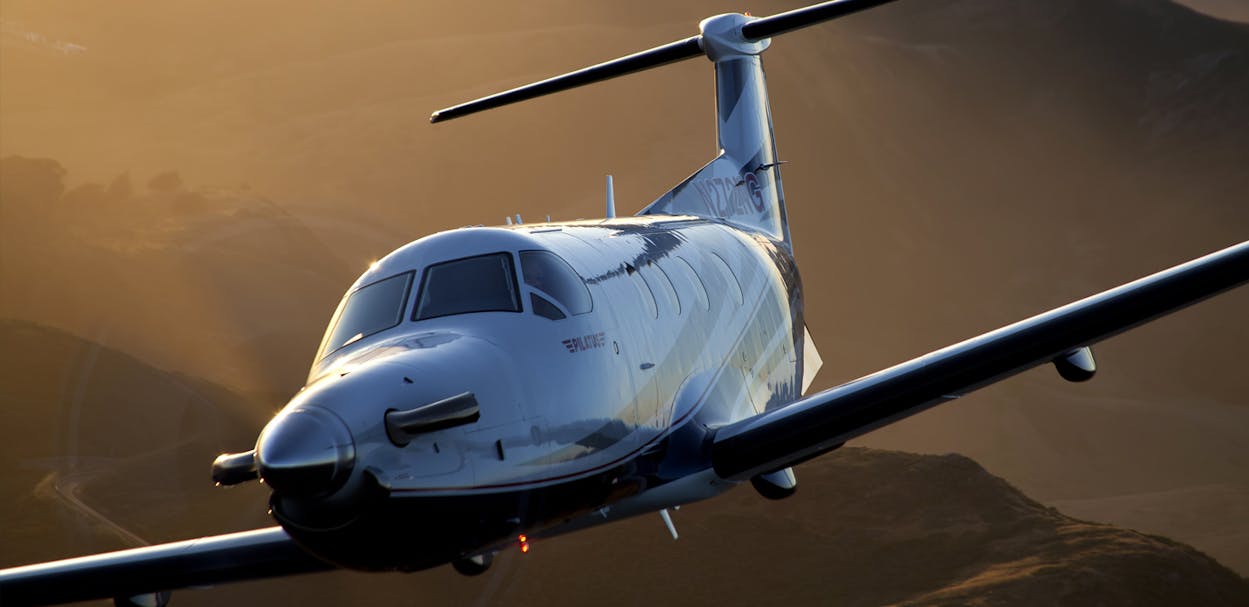Texas may not be a sovereign nation outside of our hearts (and RoT headquarters), but the state’s Department of Public Safety is is becoming quite the military force.
First came the news that DPS was getting its own “Navy,” in the form of gunboats to fight drug smugglers and immigration mules who cross the Rio Grande. And now, there’s going to be a fancy add-on to its “Air Force.”
As G.W. Schulz of the Center for Investigative Reporting wrote, Texas’s small government has spent big bucks—$7.4 million, to be specific— on a “high-altitude spy plane,” the PC-12 NG Spectre, from the Swiss company Pilatus Aircraft Ltd.
That’s not just a lot of money, but a possible provocation to libertarians and privacy advocates, who have already taken issue with the federal government’s use of both manned and unmanned surveillance planes. Wrote Schulz:
Among its features is a $1 million array of surveillance cameras with high-resolution and thermal-imaging capabilities, and a $300,000 downlink system that enables the plane’s crew to send real-time surveillance images anywhere in the state, according to records obtained by the Center for Investigative Reporting through the Texas Public Information Act. The package will also come with four sets of night-vision goggles worth about $60,000, records show….
Texas state police spokesman Tom Vinger said most of the plane’s missions will be carried out on the border between the United States and Mexico, and “serve as a tool in assisting specific joint operations that are clearly defined by area and duration.”…
Texas politicians have long asserted that Washington wasn’t doing enough to secure the nation’s boundary with Mexico. The Lone Star State has reportedly devoted $600 million in taxpayer money to beef up the border since 2007, according to news accounts.
No one has benefited more than the Texas Department of Public Safety, which formed military-esque Ranger Reconnaissance Teams, constructed intelligence command centers and procured high-speed gunboats with .30-caliber, fully automatic machine guns.
“Our law enforcement strategy continues to adapt to the evolving threats around us, including the tactics of ruthless drug cartels and transnational gangs,” Vinger said. “ … We have a responsibility to protect and serve Texans, and we simply cannot meet tomorrow’s threats with yesterday’s strategy.”
In its brochure for the aircraft, Pilatus notes that the PC-12 NG looks just like a normal business plane, but is instead:
…carrying some of the most sophisticated surveillance and communication equipment in the air today … [and] the perfect platform for lengthy surveillance missions along far-reaching borders … Agencies tasked with the difficult mission of protecting long stretches of unguarded borders have found the PC-12 NG uniquely capable of expanding their reach without blowing their budgets.
The brochure also highlights the aircraft’s ability to spy on drug smugglers:
Protect your undercovers by knowing if suspects are carrying weapons, how many perpetrators there may be and where they are moving. …Use the infrared sensor to observe and protect day and night.
“Texas Spent How Many Millions of Dollars for a Border Security Spy Plane?” asked Liz Klimas of the conversative, Glenn Beck-owned website the Blaze. In an earlier article, Klimas noted that Senator Rand Paul of Kentucky has been spearheading a bill “to prohibit any government agency from using a drone to ‘gather evidence or other information pertaining to criminal conduct or conduct in violation of a regulation’ without a warrant.
As Schulz wrote, drones and surveillance planes raise Fourth Amendment questions regarding the definition of a “search.” He noted that the Supreme Court has banned the use of thermal imaging to look inside the homes of suspected marijuana growers, but “other rulings have held that police can use aircraft to hunt for illegal activity in a resident’s yard if anyone else could easily witness it by flying overhead.”
Earlier this year, the Supreme Court also unanimously ruled against the use of GPS trackers without a warrant.
As Gary Martin of the San Antonio Express-News reported in July, 2011, the federal government already has one Predator drone and one Guardian unmanned aerial vehicle devoted to security along the Texas Gulf Coast and the Texas/Mexico border, with another Arizona-based drone assigned to the El Paso and Big Bend border areas.
Such federal help was specifically requested by Rick Perry in 2010, though the governor seemingly forgot the UAVs existed early in his presidential campaign.







